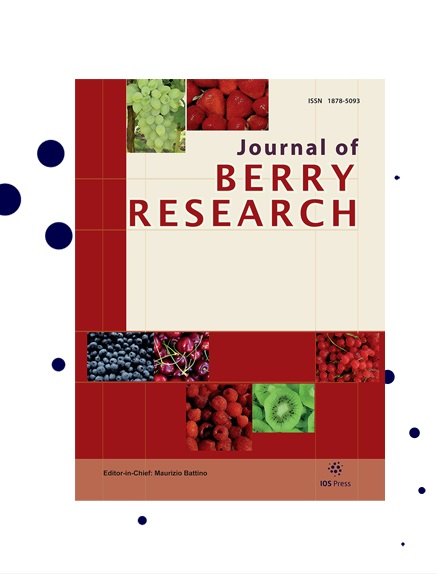渗透脱水arazá(Eugenia stipitata,McVaugh)生产工艺条件的优化及其抗氧化含量和活性的评价
IF 1.4
4区 农林科学
Q3 PLANT SCIENCES
引用次数: 1
摘要
背景:阿拉兹本文章由计算机程序翻译,如有差异,请以英文原文为准。
Optimization of the processing conditions for producing osmo-dehydrated arazá (Eugenia stipitata, McVaugh) and evaluation of its antioxidant content and activity
BACKGROUND: Arazá, a tropical berry rich in thermolabile antioxidants (ascorbic-acid/phenolics/flavonoids/carotenoids), is a potential ingredient for preparing functional foods; however, its high perishability hinders its industrial application. Osmotic-dehydration (OD), a processing method that operates at low temperature ranges, may be adequate for improving arazá's shelf-life without reducing its palatability/nutritional quality. Physicochemical and nutritional properties depend on the time/temperature/osmotic-solution concentration applied; therefore, parameters optimization is required. Processing selection must also consider treatment effect on antioxidants composition/activity/bioaccessibility in the gastro-intestinal (GI) tract, key factors in bioactives health benefits. OBJECTIVES: a) Optimize OD duration/temperature/sucrose concentration to maximize process efficiency/total-polyphenol content/overall-acceptability using principal component analysis and Response-Surface-Methodology/Desirability-Function b) Determine OD effect on antioxidant content/activity/bioaccessibilities before and after gastro-intestinal digestion. RESULTS AND CONCLUSIONS: Processing conditions have opposite effects on sensory and chemical properties; reaching antioxidant content/activity highest levels in the osmo-dehydrated fruit required 60 min/20°Bx; whereas, the best organoleptic scores demanded 180 min/60°Bx. Although osmotic-drying reduced the fruit's antioxidant content/activity 39–76%, the process improved antioxidants bioaccessibilities, since these values were: 63–85% (untreated fruit) and 72–90% (osmodehydrated arazá (ODA)), whereas the activity retention levels were 67–76% (untreated fruit/ODA).
求助全文
通过发布文献求助,成功后即可免费获取论文全文。
去求助
来源期刊

Journal of Berry Research
Biochemistry, Genetics and Molecular Biology-Biochemistry
CiteScore
3.50
自引率
11.80%
发文量
21
期刊介绍:
The main objective of the Journal of Berry Research is to improve the knowledge about quality and production of berries to benefit health of the consumers and maintain profitable production using sustainable systems. The objective will be achieved by focusing on four main areas of research and development:
From genetics to variety evaluation
Nursery production systems and plant quality control
Plant physiology, biochemistry and molecular biology, as well as cultural management
Health for the consumer: components and factors affecting berries'' nutritional value
Specifically, the journal will cover berries (strawberry, raspberry, blackberry, blueberry, cranberry currants, etc.), as well as grapes and small soft fruit in general (e.g., kiwi fruit). It will publish research results covering all areas of plant breeding, including plant genetics, genomics, functional genomics, proteomics and metabolomics, plant physiology, plant pathology and plant development, as well as results dealing with the chemistry and biochemistry of bioactive compounds contained in such fruits and their possible role in human health. Contributions detailing possible pharmacological, medical or therapeutic use or dietary significance will be welcomed in addition to studies regarding biosafety issues of genetically modified plants.
 求助内容:
求助内容: 应助结果提醒方式:
应助结果提醒方式:


